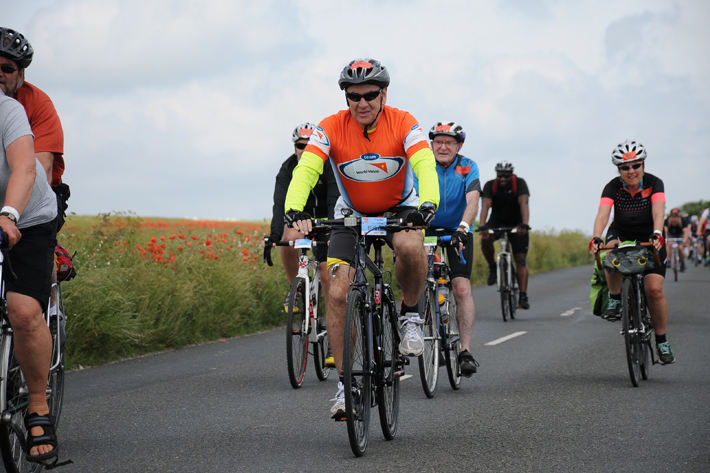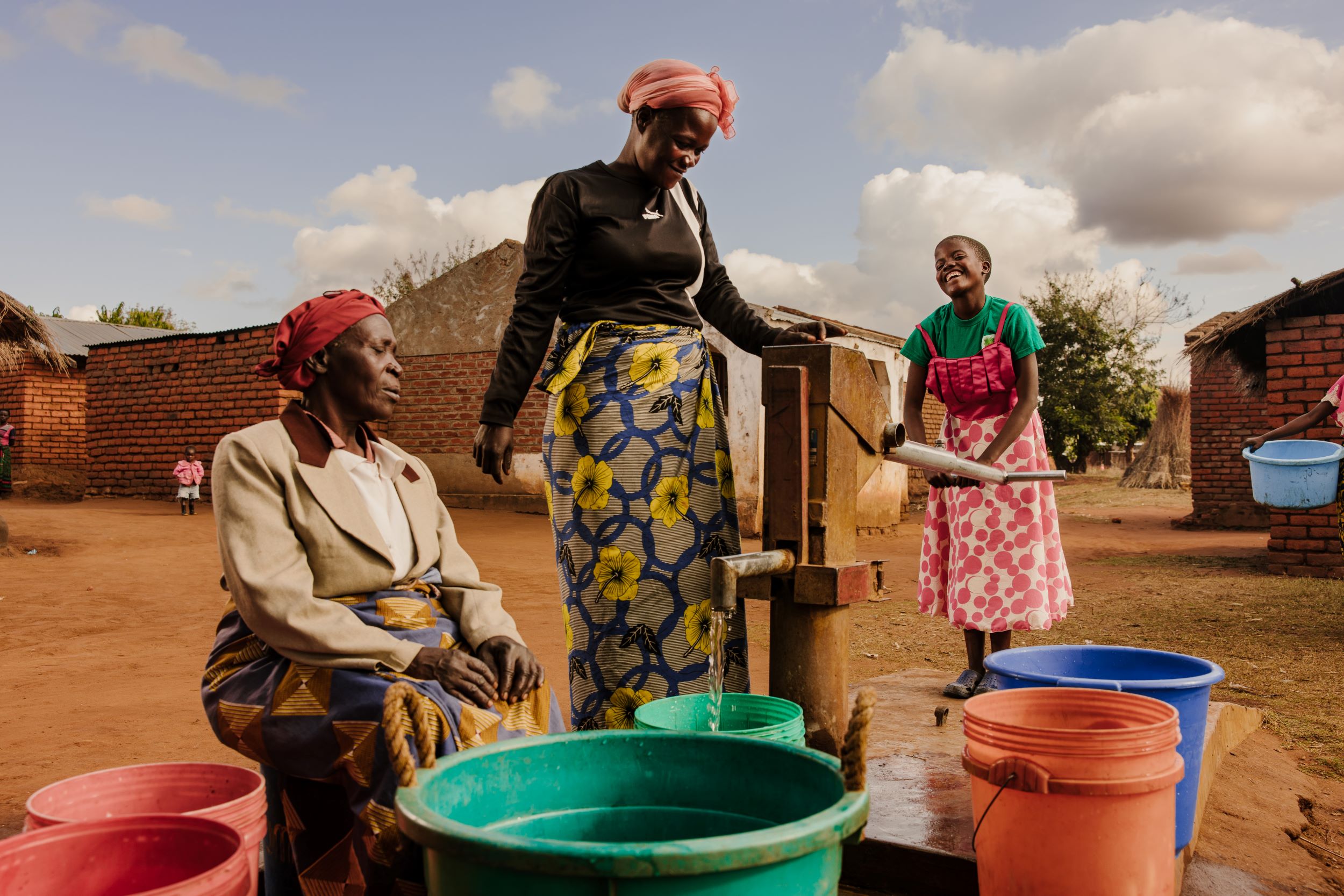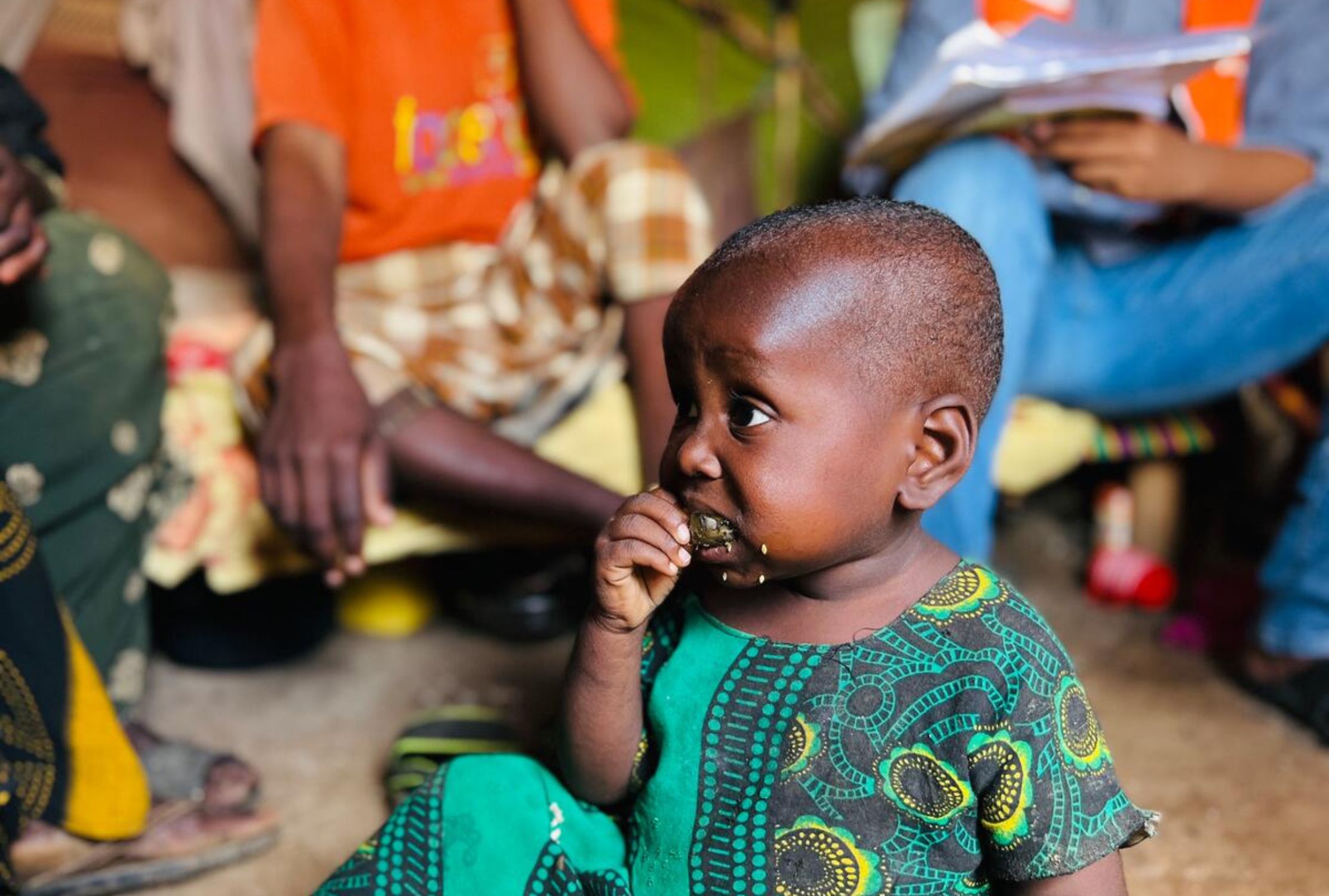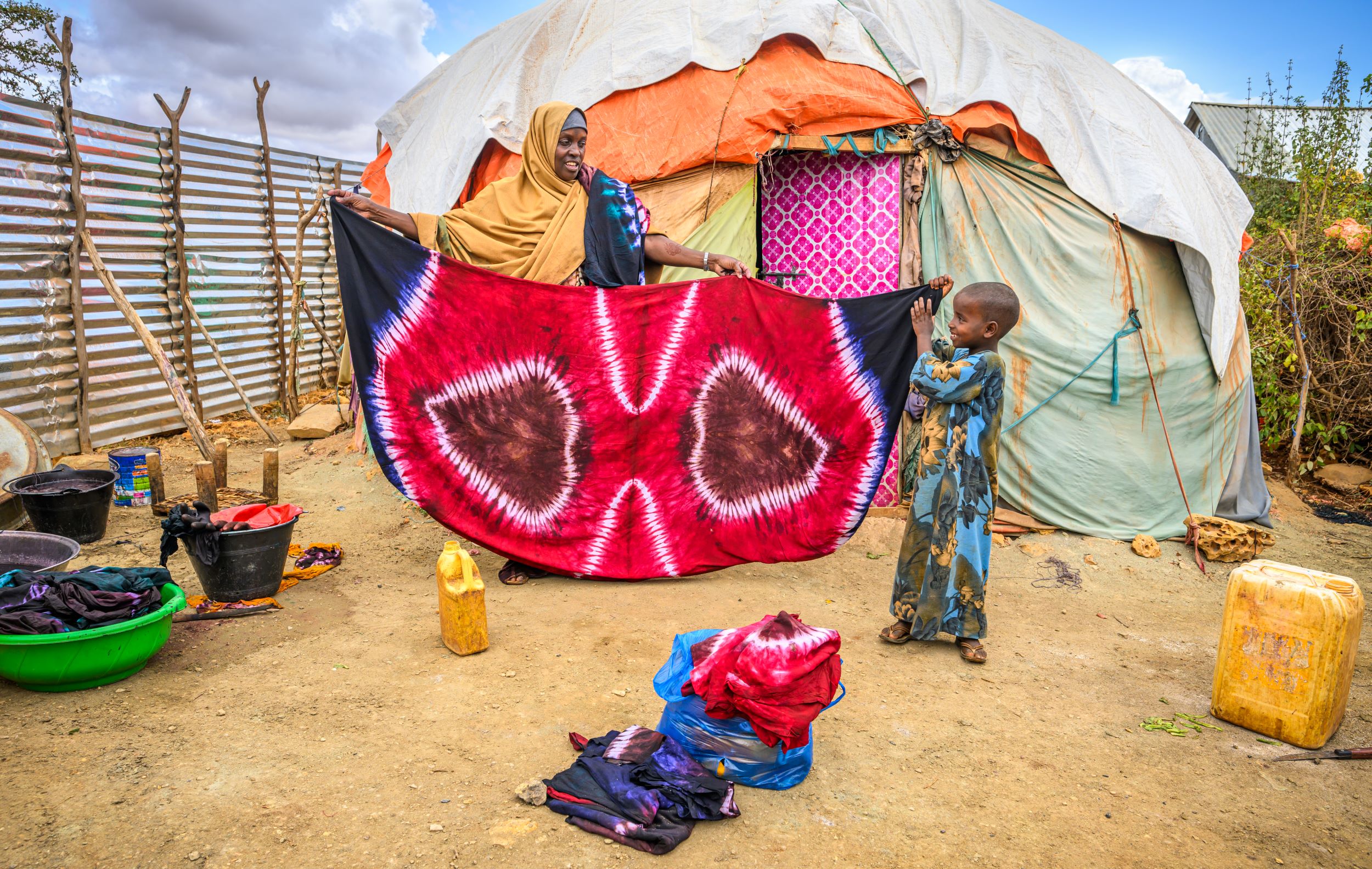
A unique fundraising idea
One mother is tie-dying her way out of poverty, and you can help too
Families around the world are benefiting from World Vision's skills training classes. By learning new skills, they're opening doors to opportunities that help them generate an income.
Who knew learning to tie-dye could be empowering? But that’s what’s happened to Atiko in Somalia.
A World Vision project in Somalia has provided Atiko with a new skill that she’s putting to good use...
“I chose this skill when I arrived here first and set up this shelter you see,” Atiko shares outside her small home in a displacement camp.
When the family first arrived – Atiko, 36, and her four surviving children, 19, seven, six and four – they only had one bed. But now has she learnt how to tie-dye, things have changed for good.
“I thank God my life is different now compared to when I reached here. I had a hut only, but now we have three beds...”
What is tie-dye and how is it done?
Tie-dye is the term used to describe a method of fabric design. Many people choose to tie-dye their clothes or sheets to get bright and colourful patterns, simply done by crumpling or twisting the fabric and securing the folds before saturating the fabric with a dye.
LEARN MORE: How you can use crafts to fundraise
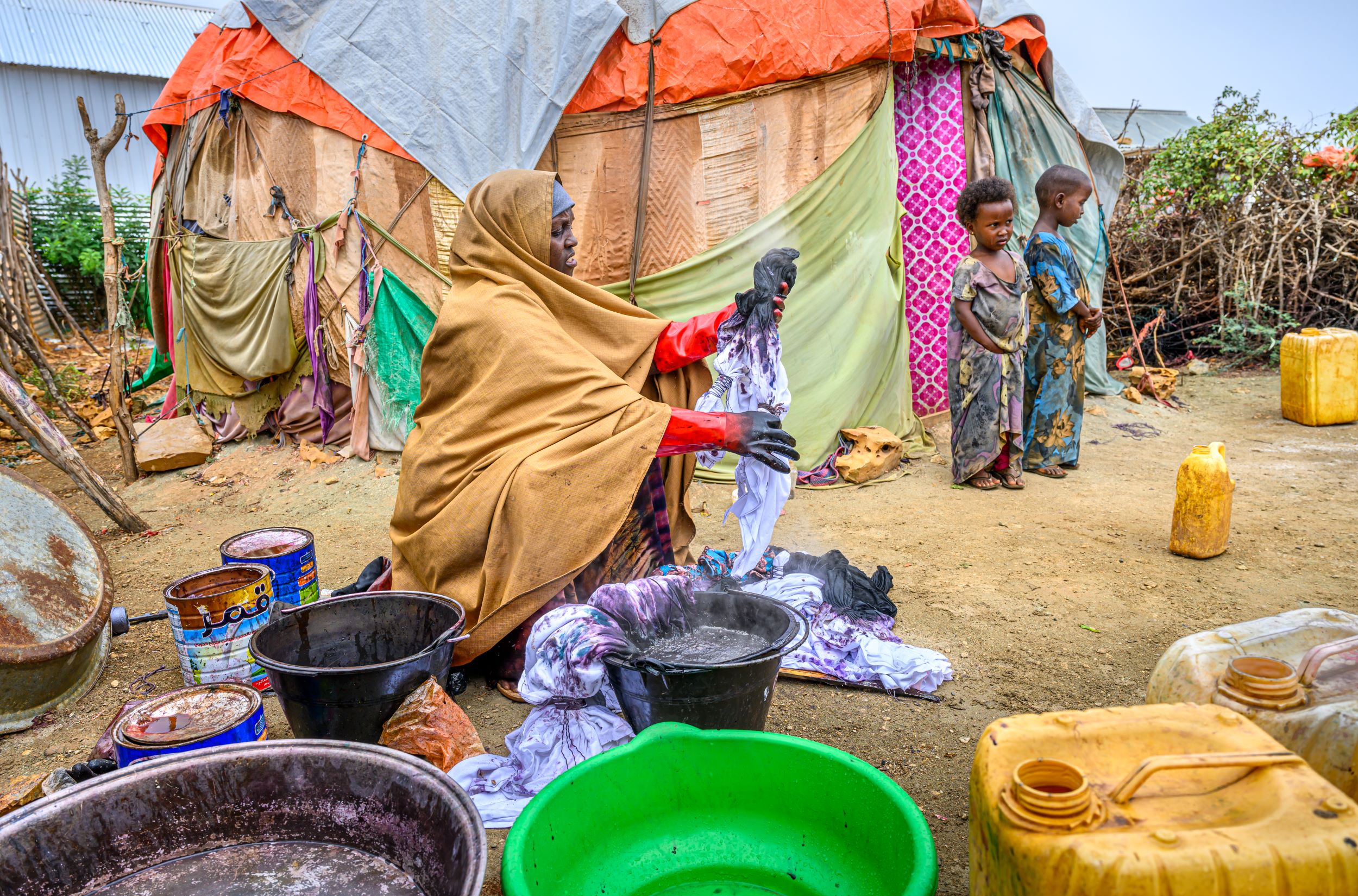
Atiko lost everything
Conflict and climate change have made life challenging for many in Somalia, though it wasn’t always a struggle. Atiko remembers how things were when she was a young child.
“I had happy years,” she says. “When my dad and mother were alive and lived together and there was livestock at our homestead of goats and camels.” As she speaks, she uses rubber-gloved hands to press fabric into a large bucket of hot water, turning it a deep blue.
It was drought that brought Atiko to the camp. The death of her livestock brought an end to life in her village as well as her marriage.
“We left there because of the drought which had affected our farm and livestock. I also had a dispute with my husband,” she says. “We had to leave because we lost our livestock and there was no harvest for several years.”
When Atiko came to the camp, she wasn’t sure what to do.
“Initially, I thought, ‘Where would you seek help from somebody you even don’t know?’ Since my husband failed to care for the family – but now is different.”
Now Atiko has the skills to improve her own life.
Developing new skills to generate an income
Atiko is one of 2,000 expected to benefit from a World Vision skills training project that runs until 2024. This year, 800 people graduated with skills that will enable them to make a living. Skills like hairdressing, construction, tailoring, mobile phone repair, electrical work and, of course, tie-dying.
Andrew Mugobo is the manager for the project.
“We give people options of what to study,” he says. “When we go to the camps, we ask two questions: Do you want to pursue what you did before? Do you want to start a new livelihood?”
He says younger people are mainly choosing a new livelihood, with tailoring proving popular. Of those who choose to train in electrical installation or construction, 100% get jobs.
But there’s more to the programme.
“Besides training,” Andrew continues, “every household has to have at least one member in a savings group.” This enables them to save small amounts of money together, then lend to each other when needs arise, such as illness or falling income due to drought. So far, 247 savings groups have been created.
Students also learn about business development – things like marketing, customer care, record keeping.
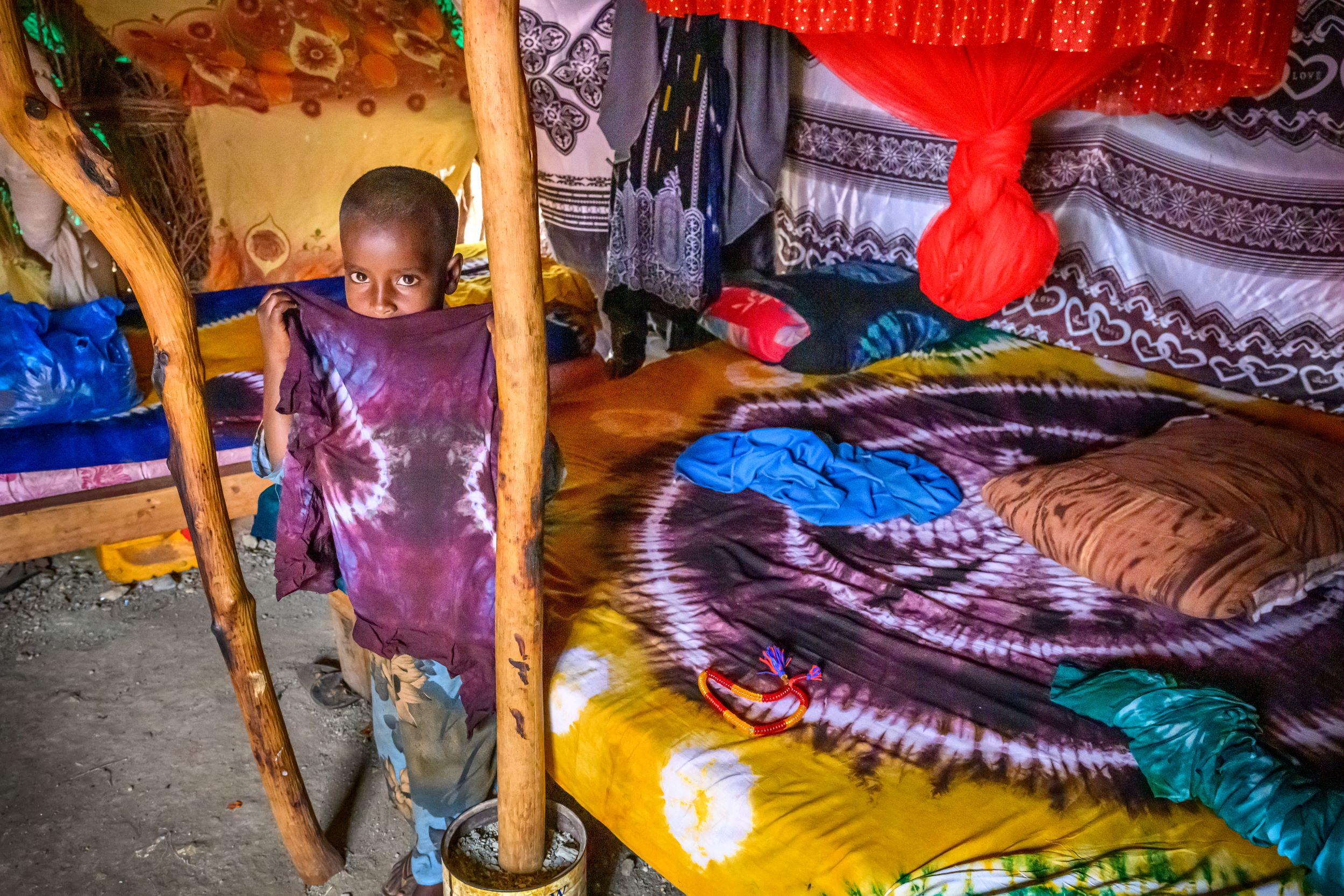
"Knowledge is power"
Atiko can see for herself the benefits of all that she’s learned.
“As we know,” she says,“knowledge is power and if you learn something you are in a better position. If you are given a handout, it will end in due time but if you learn something it will contribute to your success.”
After six months’ training, she now sells her tie-dye fabric creations, which provide her with an income.
She is proud of her house and her ability to take care of her children. “When I started it, I had only this hut and I have added the fence and the toilet as well,” she says. “I am also taking care of the livelihood of my children, school fees, and any other requirements of my family.”
She continues, “Thank God, I am confident. I dreamt last night that I will be successful in life.”
Feeling empowered for life
Atiko’s new skills mean she now feels empowered.
“I am the family head and taking care of all the family chores,” she says. “We are better now since I started working on the tie-dye business. I see myself as somebody who can work and change something for my family life.”
Atiko’s story is a great example of how World Vision supporters are making a long-lasting difference to the lives of vulnerable children and their families. Her business has given her the tools to build a new life for her children and for their future.
How you can use crafts to fundraise
Thanks to our community focused solutions, we're helping families like Atiko's break the cycle of poverty by learning new skills to generate an income. But have you wondered how you could use your skills to help others?
We have lots of craft fundraising ideas such as painting, baking, knitting, or even tie-dying sheets like Atiko. You could learn to tie-dye and sell your homemade crafts as a way to fundraise for World Vision whilst having some fun with family and friends.
Why fundraise for World Vision? World Vision works with communities to give hope to children and help their families change their own lives for the better. Our work includes the provision of water and sanitation, education and child protection, all with the aim of helping children experience fullness of life.
Every penny donated will help ensure children are protected in some of the world’s hardest places.
If you're looking for inspiration, some help or advice, get in touch with our fundraising team or find out more about fundraising with World Vision.


